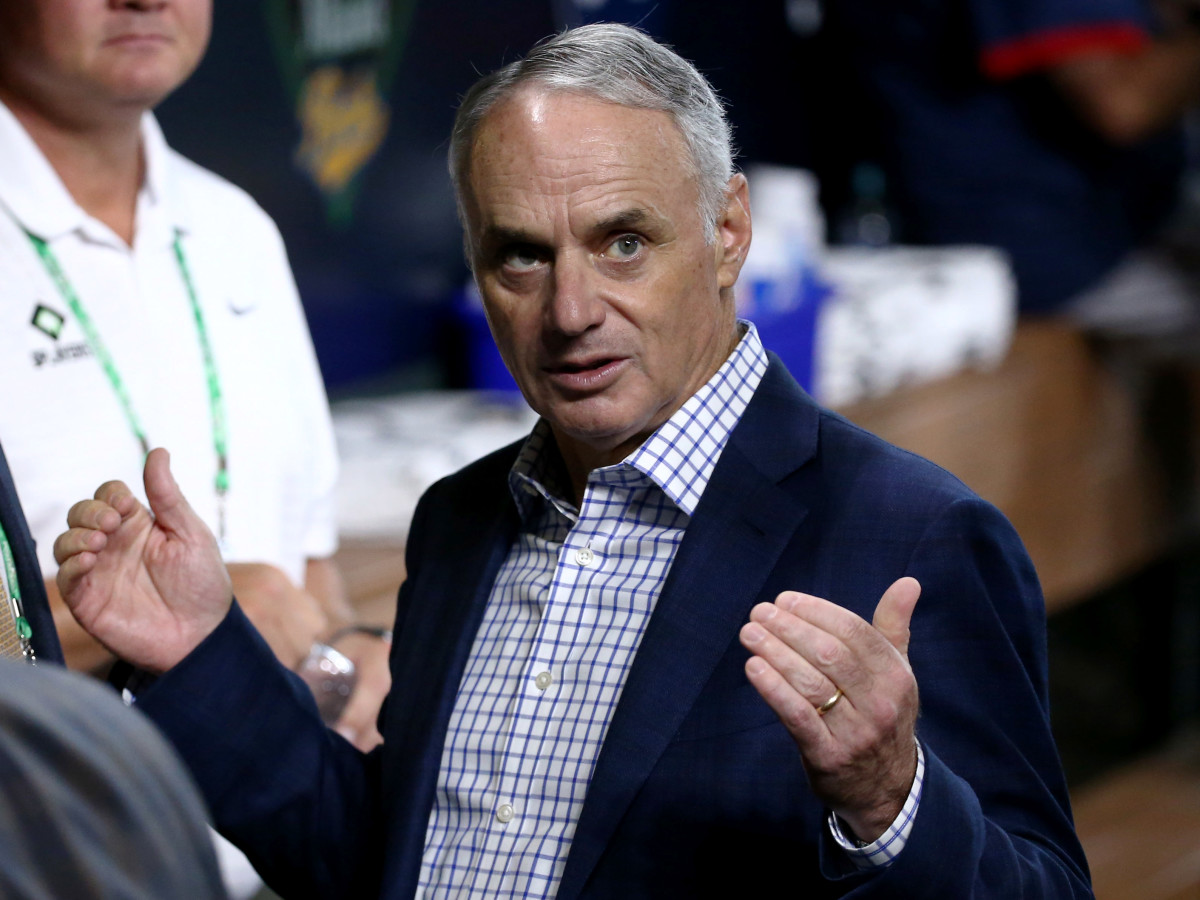MLB Is Not Even Trying to End the Lockout

Some 10 hours after Major League Baseball locked out its players, commissioner Rob Manfred told reporters that a work stoppage is bad for business. “Let me finish by reiterating our willingness to bargain at any time,” he added. Evidently he has changed his mind.
According to two people familiar with the process, entering Thursday the league and the union had not met since the collective bargaining agreement expired at 11:59 p.m. on Dec. 1. At 12:01 a.m. on Dec. 2, the league imposed a lockout, baseball’s first work stoppage in 26 years. A handful of people are scheduled to talk Thursday about issues other than the core economic ones, a broad category that could include such topics as the joint drug agreement. The conversation is inconsequential enough that lead negotiators Dan Halem, of MLB, and Bruce Meyer, of the players’ association, are not expected to attend.

Union officials declined to comment. An MLB official said that it was the league that suggested the Thursday session.
The league believes the union did not treat Dec. 1 as a real deadline. The union believes the league spent more time enumerating topics on which it would not negotiate instead of actually negotiating. Both claims probably have merit. Neither really matters.
MLB is not yet in danger of losing games, but it is already losing attention. Max Verstappen won a controversial Formula 1 title on Sunday. Steph Curry broke the career three-pointer record on Tuesday. The NFL playoffs begin in a month.
Between Thanksgiving and Dec. 1, teams committed nearly $1.5 billion in free agency. They could be using this month to introduce those players to their new teams. Instead, the Red Sox’ Twitter account spent Wednesday Photoshopping a photo of Pedro Martínez chewing bubble gum. This is an outrageous way to treat the paying customers who keep professional sports afloat.
For every 100 likes this gets, we’ll make Pedro’s bubble bigger. pic.twitter.com/gYEEY2kFAX
— Red Sox (@RedSox) December 15, 2021
And they’re not even trying. No one involved believes they will have a serious conversation before January. People familiar with the process suggest that convening the two sides in a room would just produce a repeat of the obstinate days leading up to the CBA’s negotiation. What would be the point of having everyone retake positions they already took?
It’s true, that would be tedious. So here’s an idea: Negotiate!
The owners’ proposals to this point have been largely unserious. The union was never going to agree to make players free agents at 29.5 years old—after their physical peak. Nor was it likely to look fondly at a system that would allocate bonus money to young players—by taking money from their pensions.
The players tend to ask for the moon and then look aggrieved when they don’t get it. The truth is that they bargained away most of their leverage in the past two CBA negotiations, and they do not have much left to offer. But the owners are miscalculating their position here.
Both sides deserve some blame for intransigence. But only one side initiated a lockout. The owners did so to prevent the players from striking. That worked. There have been other consequences, though: The league’s website, television channel and social media accounts, scrubbed of players’ names and images, present a constant reminder of how little the sport has to offer without its labor. The union might not have had the votes to organize and maintain a strike; a lockout offers forced solidarity. It also serves as a reminder to fans that these people do not really care about them.
In that Dec. 2 press conference, Manfred said, “We [imposed a lockout] out of a desire to drive the process forward to an agreement now.”
Then, it seems, he turned off his phone.
More MLB Coverage:
• MLB Players Can't Stay Silent Anymore During Lockout
• Re-Ranking the Top 25 Free Agents
• Why Aren't the Yankees Acting Like the Yankees?
• Braves Risk Wasting a Ready-Made Repeat Opportunity
• Lingering Questions As MLB Lockout Puts Game on Hold
